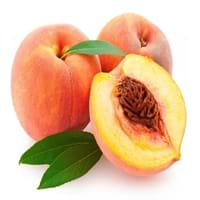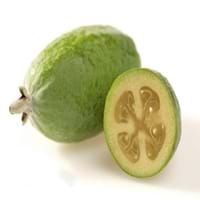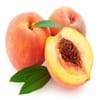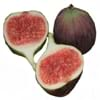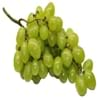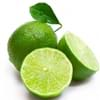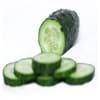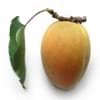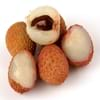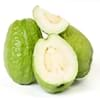Health Benefits
Cancer prevention, Heart care, Improves eye vision, Reduces stress, Regulation of heart rate
Anti depressant, Cancer prevention, Reduces nervous tension, Treatment of alzheimer's disease, Treatment of Lung disease
General Benefits
Anti oxidant properties, Eye care
Digestive aid, Helps in weight loss, Improves blood circulation, Strengthens bones, Treatment of common cold
Skin Benefits
Heals sunburn, Reduces wrinkles, Treatment of skin diseases
Brightens and lightens complexion, Skin rejuvenation
Hair Benefits
Prevents hair loss
Promotes longer and healthier hair, Protects hair
Allergy Symptoms
Abdominal pains, Anaphylaxis, Breathing difficulty, Diarrhea, Dizziness, Hives, Itching, Lightheadedness, Nasal congestion, Nausea, Swelling of mouth, tongue or lips, Tingling sensation in mouth, Vomiting, Wheezing
NA
Side Effects
Allergic reaction
Allergic reaction
Best Time to Eat
As a snack in the late afternoon, Eat the fresh ones, avoid mixing with any other foods, don't eat after meal., Morning time (before lunch)
As a snack in the late afternoon, Don't consume at night and before bed, Eat the fresh ones, avoid mixing with any other foods, don't eat after meal., Morning time (before lunch)
Vitamin A (Retinol)
Not Available
Vitamin B5 (Pantothenic Acid)
Vitamin C (Ascorbic Acid)
Vitamin K (Phyllochinone)
Phytosterol
Not Available
Calories in Fresh Fruit with Peel
Not Available
Calories in Fresh Fruit without Peel
Not Available
Calories in Frozen Form
Not Available
Calories in Canned Form
Not Available
Type
Tree fruit
Tree fruit
Season
Autumn, Summer
Autumn, Winter
Varieties
Reliance, Sweet Scarlet, Spring Snow, Sugar May, Santa Rosa, Red Beauty, Glowhaven, Cresthaven and Redhaven Peaches
Anatoki, Gemini, Kaiteri, Kakariki, Pounamu, Unique, Apollo, Den's Choice, Kakapo, Mammoth, Opal Star, Triumph and Wiki Tu
Color
Pink, Red, White, Yellow, Yellowish-orange
Green
Inside Color
Yellow
White
Origin
China
Argentina, Brazil, Paraguay, Uruguay
Grows on
Trees
Not Available
Soil Type
Sandy loam, Well-drained
Clay loam, Gravely loam, Sandy
Climatic Conditions
Cold, Warm
Cold, Warm
Facts about
- In china, peaches are considered as a symbol of good luck.
- From 1982, august is National peach month in USA.
- In roman times, Peaches were also called as Persian apples, as people assumed that they originated from Persia.
- Feijoa is called as "pineapple guava" in some countries.
- Feijoa tree is an ornamental plant that can also be used as hedge & windbreak.
- All parts of feijoa fruit are edible(skin is mostly discarded).
Top Producer
China
New Zealand
Other Countries
Greece, Italy, Spain, United States of America
Australia, Azerbaijan, India, Japan, United States of America
Top Importer
Germany
China
Top Exporter
Spain
New Zealand
Botanical Name
Prunus persica
Acca sellowiana
Synonym
Not Available
Feijoa sellowiana or Orthostemon sellowianus
Subkingdom
Tracheobionta
Tracheobionta
Division
Magnoliophyta
Magnoliophyta
Class
Magnoliopsida
Magnoliopsida
Family
Rosaceae
Myrtaceae
Species
P. persica
A. sellowiana
Generic Group
Rose
Myrtle
Difference Between Peach and Feijoa
We might think that Peach and Feijoa are similar with respect to nutritional value and health benefits. But the nutrient content of both fruits is different. Peach and Feijoa Facts such as their taste, shape, color, and size are also distinct. The difference between Peach and Feijoa is explained here.
The amount of calories in 100 gm of fresh Peach and Feijoa with peel is 39.00 kcal and Not Available and the amount of calories without peel is Not Available and 55.00 kcal respectively. Thus, Peach and Feijoa belong to Low Calorie Fruits and Low Calorie Fruits category.These fruits might or might not differ with respect to their scientific classification. The order of Peach and Feijoa is Rosales and Myrtales respectively. Peach belongs to Rosaceae family and Feijoa belongs to Myrtaceae family. Peach belongs to Prunus genus of P. persica species and Feijoa belongs to Acca genus of A. sellowiana species. Beings plants, both fruits belong to Plantae Kingdom.
